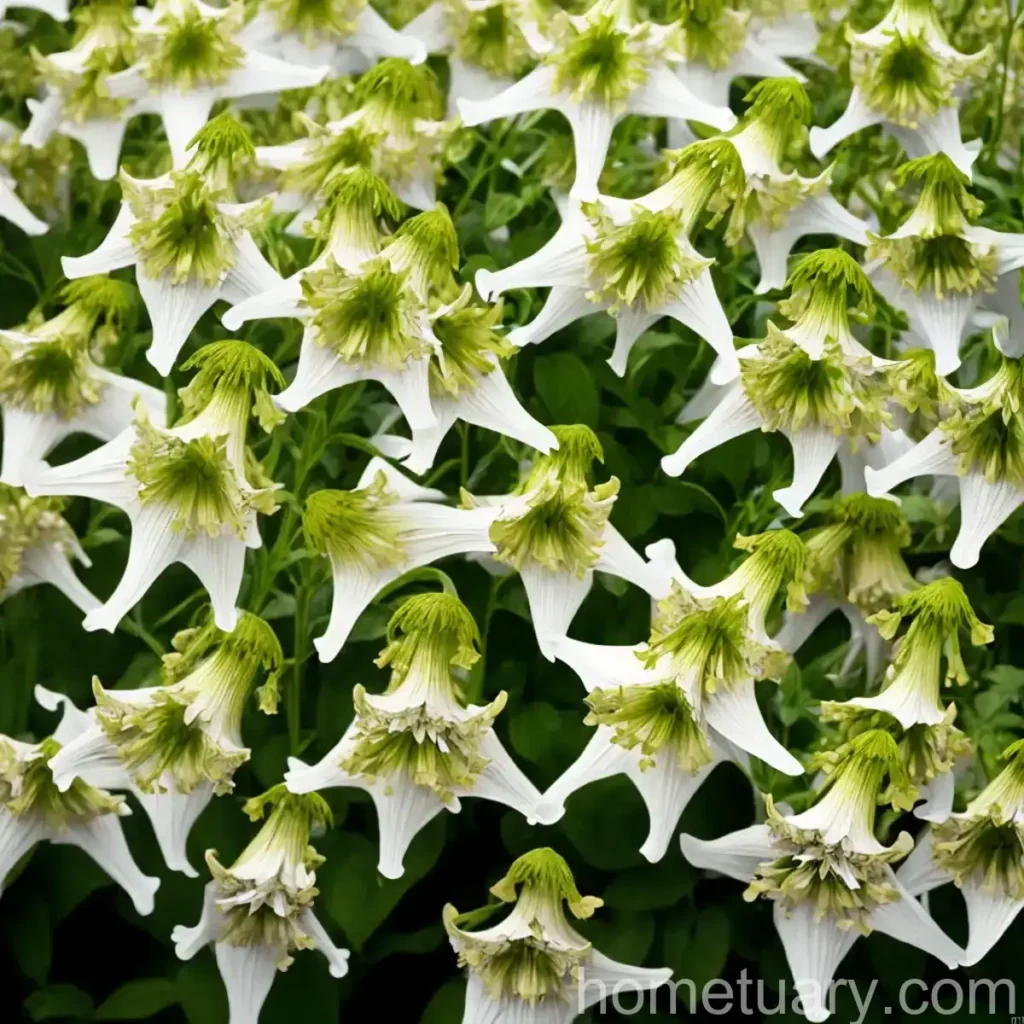Dalmation Bellflower (Campanula portenschlagiana ‘Aurea’)
Dalmation bellflower (Campanula portenschlagiana ‘Aurea’) is a versatile and visually appealing plant that adds a pop of color to gardens, containers, and landscapes. This perennial plant is cherished for its golden-yellow foliage and stunning blue bell-shaped flowers. In this comprehensive guide, we will explore everything you need to know about the Dalmation bellflower, from its cultivation and uses to maintenance and common pests.
What is Dalmation Bellflower?
Dalmation bellflower, also known as Campanula portenschlagiana ‘Aurea’, is a low-growing perennial plant that originated in the Dalmatian Mountains of Croatia. It belongs to the Campanula genus, which comprises over 300 species of annuals and perennials known for their charming bell-shaped flowers. The ‘Aurea’ variety of Campanula portenschlagiana is particularly recognized for its vibrant, golden foliage that provides a striking contrast to its lavender-blue flowers.
Key Takeaways
To gain a comprehensive understanding of Dalmation bellflower and its care, it’s essential to explore its culture, uses, water and sunlight requirements, fertilization, soil preferences, pruning techniques, propagation methods, common diseases, and pests. Let’s delve into each of these aspects in detail.
Culture
Before delving into the specific cultural requirements of Dalmation bellflower, it’s important to understand the plant’s native habitat. Dalmation bellflower is indigenous to the rocky limestone slopes of the Dalmatian Mountains, where it thrives in well-draining soil and receives ample sunlight.
Uses
The Dalmation bellflower serves various purposes in horticulture and landscaping. Here are some of its key uses:
- Ground cover: Its spreading habit and attractive foliage make it an excellent ground cover plant.
- Borders and edging: Dalmation bellflower creates charming borders and edging for flower beds and pathways.
- Container planting: Its low-growing nature makes it well-suited to container gardening, adding color and texture to patio planters and window boxes.
- Rock gardens: The plant’s natural habitat makes it an ideal candidate for rock gardens and alpine plantings.
Water
Dalmation bellflower prefers moderate levels of moisture. While it can tolerate short periods of dryness, it’s essential to water it regularly, especially during hot and dry spells. Proper watering is crucial during the plant’s establishment phase and in periods of extended drought.
Sunlight
This variety of Campanula portenschlagiana thrives in full to partial sunlight. It requires at least 4-6 hours of direct sunlight daily to ensure healthy growth and prolific flowering. Adequate sunlight also enhances the vibrancy of its golden foliage.
Fertilizer
A balanced, all-purpose fertilizer can be applied to Dalmation bellflower during its active growth period in spring and summer. A slow-release fertilizer, either granular or liquid, can provide the necessary nutrients for healthy foliage and abundant blooms.
Soil
The ideal soil for Dalmation bellflower is well-draining, moderately fertile, and slightly alkaline. It thrives in rocky or sandy soils resembling its native habitat. Amending the soil with organic matter, such as compost, can improve its texture and drainage.
Pruning
Pruning Dalmation bellflower helps maintain its compact growth habit and encourages additional flowering. To deadhead spent blooms, simply pinch or trim the faded flower stalks at their base. Periodic trimming of the plant’s foliage can also promote a tidy and bushy appearance.
Propagation
Dalmation bellflower can be propagated through various means, including division, seeds, and cuttings. Division is a reliable method to increase the plant’s population, while cuttings can be taken in spring or early summer for rapid establishment.
Container Popularity
Due to its low-growing and cascading nature, Dalmation bellflower is highly popular in container gardening. Its vibrant foliage and charming blue flowers make it a versatile addition to hanging baskets, window boxes, and mixed container plantings.
Common Diseases
Dalmation bellflower is generally resistant to diseases, especially when grown in well-drained soils and provided with adequate air circulation. However, occasional issues such as root rot and powdery mildew may occur in excessively moist conditions.
Disease Diagnosis
Keep an eye out for symptoms such as wilting, yellowing foliage, and powdery white coatings on leaves, which may indicate the presence of diseases. Prompt action, including adjusting watering practices and treating with appropriate fungicides, can help mitigate these issues.
Common Pests
The Dalmation bellflower may encounter pests such as slugs, snails, and aphids. Regular monitoring and the use of physical barriers, organic repellents, or targeted insecticidal treatments can effectively manage these pests without causing harm to beneficial organisms.
Botanist’s Tips
- To maintain the vibrancy of Aurea's golden foliage, ensure it receives sufficient sunlight and avoid over-fertilization, which can lead to excessive foliage at the expense of flowers.
- When planting Dalmation bellflower in containers, select a well-draining potting mix and provide adequate drainage to prevent waterlogging.
- Consider companion planting with other low-growing sun-loving perennials for a dynamic and colorful display.
Fun Facts
- In addition to its ornamental value, some species of Campanula are used in traditional medicine for their purported healing properties.
- The generic name “Campanula” is derived from the Latin word for “little bell,” a reference to the characteristic shape of the plant’s flowers.
Links to External Resources
For more information on Dalmation bellflower care and its landscaping applications, refer to the resources below:
- [Royal Horticultural Society (RHS) - Campanula portenschlagiana 'Aurea'](https://www.rhs.org.uk/Plants/49678/i-Campanula-portenschlagiana-i-Aurea/Details)
- [Missouri Botanical Garden - Campanula portenschlagiana 'Aurea'](https://www.missouribotanicalgarden.org/PlantFinder/PlantFinderDetails.aspx?taxonid=269487)
Discover the enduring appeal and horticultural potential of Dalmation bellflower by incorporating this captivating plant into your landscape and container designs. With proper care and attention to its cultural requirements, Campanula portenschlagiana ‘Aurea’ can contribute lasting beauty and charm to various garden settings.
Remember, before introducing any new plant to your landscape, it’s beneficial to verify its compatibility with your local climate and growing conditions. Additionally, always follow best practices for plant care and maintenance to ensure the health and vitality of your garden.















